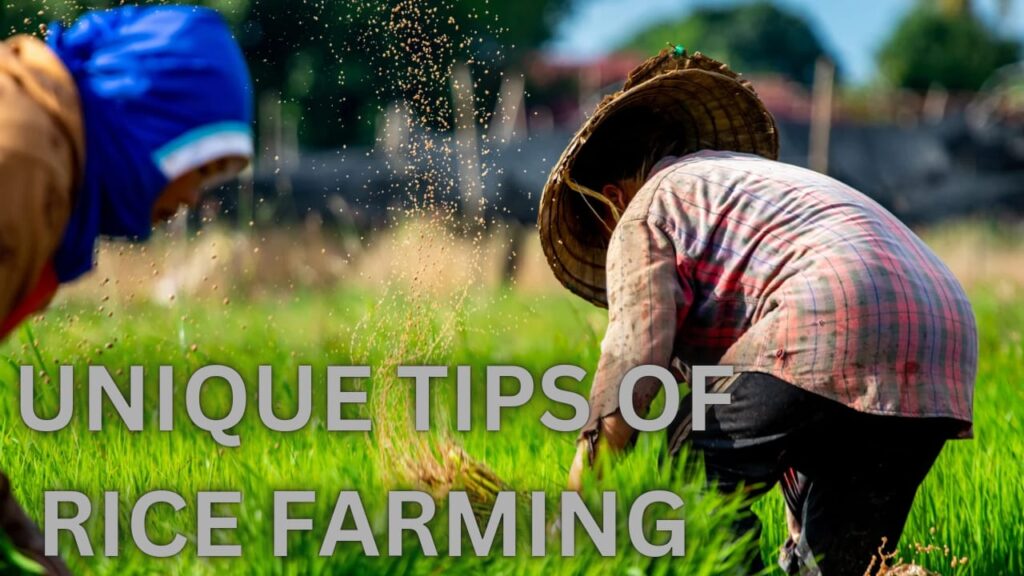An In-depth Look at Rice Farming: Techniques, Varieties, and Traditions
Rice farming, or चावल की खेती (chawal ki kheti) in Hindi, is one of the oldest and most significant agricultural practices globally, feeding billions of people every day. The methods used in rice cultivation vary greatly depending on geography, resources, and technological advancement. This article explores various aspects of rice farming, from traditional methods to modern innovations, with a particular focus on the different varieties of rice, farming techniques, and global rice-growing cultures.
Traditional and Modern Methods in Rice Farming
Rice farming can be broadly classified into two categories: traditional and modern. Traditional rice farming, including ancient Japanese rice farming, typically involves manual labor, wet-field cultivation, and the use of age-old tools. This method relies heavily on irrigated rice farming and intensive wet rice farming, where fields are flooded to create the right conditions for the rice plants to thrive.
On the other hand, modern methods like mechanized rice farming, direct seeding rice farming, and drip irrigation for rice have revolutionized the industry by reducing labor and increasing efficiency. These methods are particularly beneficial in large-scale operations, such as commercial rice farming, which aims for high yields and profits.
The Global Perspective on Rice Farming
Different countries have developed unique rice farming practices suited to their climates and geography:
- India: In India, traditional methods like basmati rice farming or basmati dhan ki kheti are common, especially in the northern regions. Farmers here focus on high-value varieties like basmati rice, which is renowned for its fragrance and is a staple in dishes like biryani. Organic methods, such as organic rice cultivation and organic paddy farming, are becoming increasingly popular, with farmers aiming to maintain soil health and sustainability.
- Japan: Japan has a rich history of wet rice agriculture, and despite its small land size, it remains a significant rice producer. Aquaponic rice farming and hydroponic rice farming have also started to gain traction in Japan, where space and resource conservation are critical.
- China: Chinese rice farming is known for its paddy field farming, where vast areas are used for rice production. Chinese rice plantation methods have evolved to include innovations like floating rice farming and fish and rice farming, where fish are introduced into the rice paddies, creating a sustainable system.
- Southeast Asia: In countries like Vietnam and Thailand, wet rice cultivation is dominant. However, unique forms like floating paddy cultivation have been adopted in areas prone to floods, such as in the Mekong Delta.
Innovative Techniques in Rice Farming
The growing need for sustainability has led to innovations in rice farming practices. Techniques such as integrated rice and fish farming and integrated rice duck farming allow farmers to raise fish or ducks alongside their rice crops, thereby reducing pests and enriching the soil. This practice, along with azolla rice farming (where a water fern is used to improve soil fertility), is part of a broader movement toward sustainable rice farming.
Varieties of Rice and Their Significance
Rice comes in many varieties, each with its own growing requirements and market value. Basmati rice is prized for its long grains and aromatic qualities, while black rice (also known as kala chawal ki kheti) is valued for its high nutritional content. Black rice farming has become popular in states like Manipur and is even promoted through black rice contract farming.
Adlai rice farming is an alternative grain crop to rice, grown in regions that are less suitable for paddy farming. Other varieties, such as red rice farming and upland rice farming, cater to specific climates or niche markets.
The Economics of Rice Farming
Rice farming can be highly profitable, but success depends on various factors such as location, method of farming, and variety. For instance, basmati rice farming profit can be high due to the premium price of basmati rice in international markets. On the other hand, small scale rice farming might struggle to compete with large-scale commercial operations, especially in terms of labor and input costs.
The cost of cultivation can vary significantly, with the paddy cultivation cost per acre influenced by factors such as water availability, labor, and seed quality. Farmers must also invest in tools used in rice farming, which range from simple hand tools for small farms to advanced machinery in more industrialized settings.
Environmental Considerations
While rice farming is essential for food security, it has significant environmental impacts. Swamp rice farming and wet paddy cultivation require large amounts of water and can contribute to methane emissions. Dry rice cultivation and aerobic rice farming are more water-efficient alternatives that reduce the environmental footprint.
Conclusion
Rice farming, whether it is चावल की खेती in India, paddy rice farming in China, or upland rice farming in Africa, remains a crucial agricultural activity worldwide. With new innovations and sustainable practices, the future of rice farming looks promising, ensuring that this ancient crop continues to feed generations to come.


